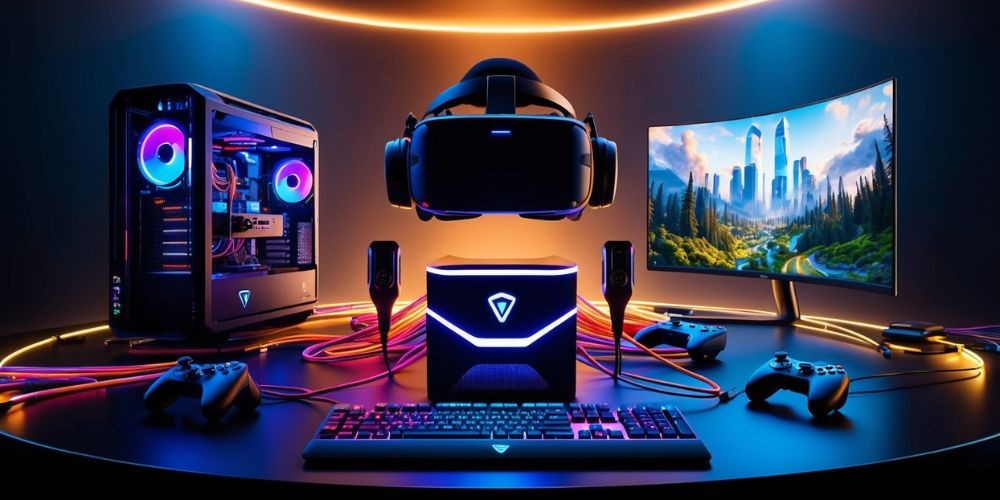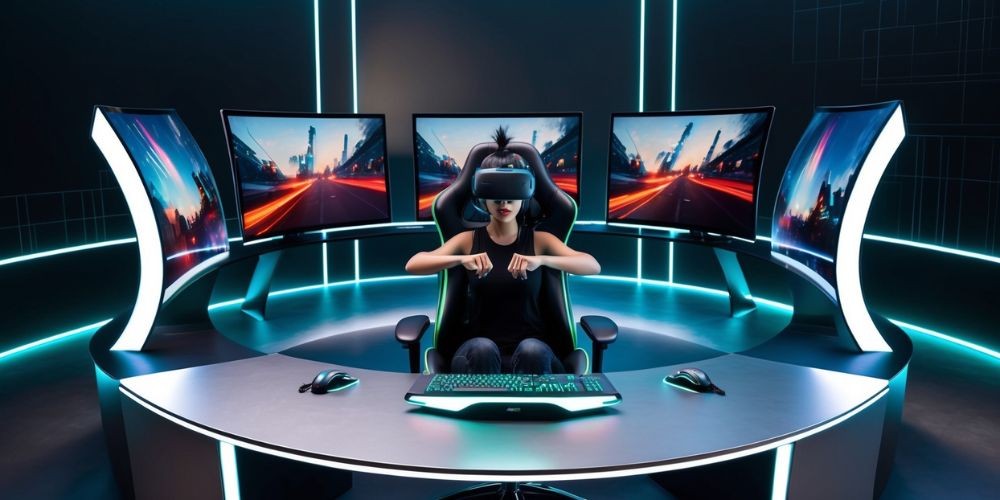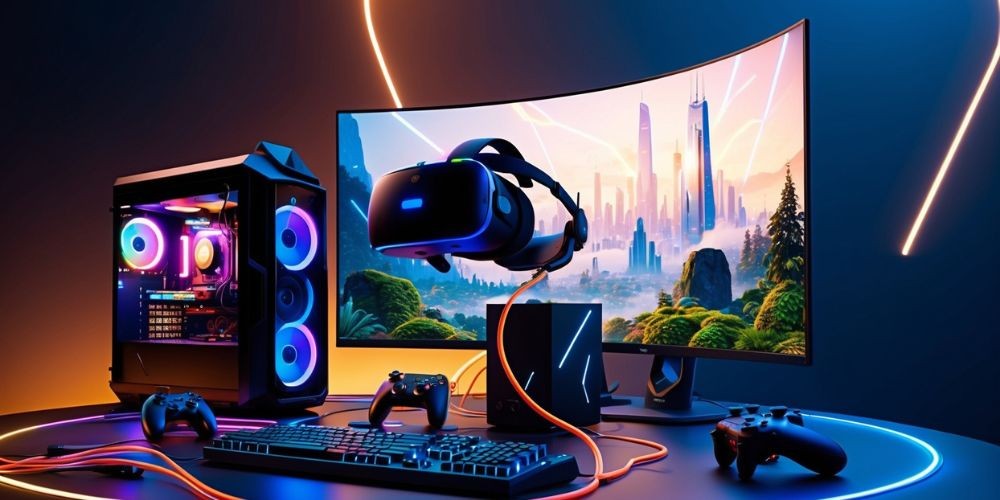
Entering the world of virtual reality (VR) gaming offers an entirely new dimension of interactive entertainment. With the potential for engaging and panoramic game environments, it's important to have the right setup to fully enjoy everything VR has to offer. Building a VR gaming setup that balances power, comfort, and technology can achieve experiences you once thought impossible. Whether you're seasoned in assembling gaming rigs or a complete newbie, these guidelines will help you connect the dots to create an immersive haven.
Graphical Power – The Core of VR Gaming
One of the most essential components in a VR gaming setup is the graphics card, which serves as the foundation for high-resolution image rendering and frame rate delivery. When deciding on a GPU, shoot for high-performance models like the Nvidia RTX 30 series or AMD Radeon RX 6000 series. These graphics cards are specifically crafted to handle the demand of VR games, offering both smooth performance and eye-catching visuals.

- Budget Option: Nvidia GTX 1660 Super or AMD Radeon RX 5600 XT.
- Mid-Range Performance: Nvidia RTX 3060 or AMD Radeon RX 6700 XT.
- Ultimate Experience: Nvidia RTX 3080 or AMD Radeon RX 6800 XT.
Choosing the right GPU will not only improve the quality of your VR experiences but also help you avoid issues such as motion sickness due to lag or poor image quality.
Processing Prowess and Memory Essentials
While the GPU is vital, equally important is a capable CPU to process physics simulations and object movements. Look for processors that excel in multi-threading capabilities, such as Intel Core i7 or AMD Ryzen 7, which offer balanced performance for gaming. For those aiming for top-tier systems, consider:
- Intel Options: Core i5-12400, Core i5-12600K, to Core i7-13700K
- AMD Options: Ryzen 5 5600X, Ryzen 7 5800X, up to Ryzen 9 7900X
Memory (RAM) is another crucial component, acting as the bridge for data exchange during gameplay. For VR gaming, 16GB of DDR4 RAM gives you a good head start, but investing in 32GB or more ensures seamless multitasking and future-proofing.
Choosing the Right Storage Solutions

Fast storage solutions play a critical role in ensuring quick game load times and system responsiveness. Traditional HDDs don't quite cut it for VR; instead, opt for SSDs or NVMe drives to meet modern demands. These offer significantly faster read and write speeds, making game transitions and data access virtually instantaneous.
- Standard Speed: SSDs offer a marked improvement over HDDs.
- For Speed Enthusiasts: NVMe SSDs deliver the fastest load times and are a no-compromise solution for high-end setups.
With VR games becoming larger and more intricate, a substantial amount of storage capacity will save you from running into space issues as you expand your library of virtual experiences.
Ensuring Power and Cooling Efficiency
In any powerful gaming rig, maintaining stability and performance consistency is key. Choose power supplies that not only support your current components but also have room for future expansions. Efficient cases should also permit superior airflow, helping your PC stay cool during intensive VR sessions. Liquid cooling systems can be especially beneficial for heavy-duty builds, providing efficient thermal regulation.
- Basic Necessity: EVGA SuperNOVA 80+ GOLD 650W is solid for entry builds.
- Future-Oriented: Corsair RM850x or Seasonic Focus GX-750 offers room for expandability.
- Ultimate Reliability: For extreme power consumption, Corsair AX1000 is ideal.

Effective cooling is paramount not just for peak performance but also for the longevity of your components, ensuring an unthrottled VR experience at all times.
VR Headset and Peripherals – Crossing into the Virtual World
Your gateway to virtual worlds, the VR headset, should be chosen carefully to provide the highest resolution and refresh rates your system can handle. Look for models like the Meta Quest 3 or Valve Index, both offering premier tracking and immersive experiences.
- Comfort Considerations: Ensure the headset fits comfortably. Properly adjusted straps and lenses can extend gameplay time without discomfort.
- High-Quality Accessories: Opt for premium controllers and headphones to enhance the sense of immersion. These peripherals are essential in translating real-world movements accurately and ensuring audible clarity.
A VR headset is a significant investment, so it’s wise to familiarize yourself with calibration and setup techniques for optimal use.
Keeping it Safe and Tuned – Maintenance and Updates

Ensuring consistent performance and avoiding common VR issues comes down to regular maintenance and updates. Routine cleaning keeps your headset lenses clear, while regular system updates ensure you have the latest improvements and bug fixes.
- Cable Management: Avoid tangled wires with effective cord management solutions.
- Software Updates: Keep both your headset software and PC drivers current to maximize performance.
- VR Health: Take breaks to avoid motion sickness and adjust in-game settings to personal comfort levels.
Staying informed on the latest developments in VR technology will enable you to continuously enhance your VR setup, keeping your experiences cutting-edge and immersive. You can join online forums and follow VR technology news portals to remain in the loop.
Crafting an immersive VR gaming setup is a journey, not a destination. As technology progresses, the tools and components essential for sustaining a top-notch VR experience will also evolve. By considering all aspects of your setup—from graphical prowess to accessories, cooling solutions to storage, and keeping everything updated—you can ensure your virtual gaming journey remains seamless and engaging.